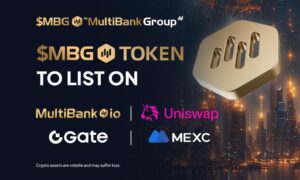Do you remember “the ICO Bubble”? A few years ago, any crypto startup entering the market made a marketing event – an initial coin offering (or ICO). Perhaps the scenario is repeating, but this time with the DeFi segment. That said, an IDO is not a copy or twin brother of an ICO. If you look at it superficially, the decentralized flotation considers all the mistakes of its predecessors. How and why? How can we determine the success of the project? Is it worth the effort? Here I’ll explain the matter in detail to help you gain a better understanding.
The initial decentralized exchange offer (IDO) in the cryptocurrency sphere is a way to issue a token on DEX (decentralized exchange), which has no intermediaries. Such a solution makes it possible to involve numerous people, as many intermediate links in classic cryptocurrencies have become a strong argument for “going DeFi.”
Why IDO?
When raising funds for a project through an IEO or ICO, developers first pay a fee and wait for the exchange to approve the project, after which it gets listed. IDO projects don’t pay high commissions and don’t require anyone’s approval because it’s a decentralized offering.
Compared to IEO and ICO, which require an initial waiting period, IDOs provide immediate access to liquidity and trading. It also improves the user experience by providing support for a secure wallet and trading platform built into a single interface. An IDO may support multiple wallet types, which simplifies user interaction.
In short, IDO facilitates the release of new projects, supporting their interaction with users. As a result, this format can quickly gain popularity among crypto developers and enthusiasts.
IDO establishes direct, fair and open communication. Eventually, decentralization became the reason for the initial popularity of cryptocurrencies. Its best features took shape in DeFi projects.
Successful projects
The first project to successfully launch in the industry was the Raven Protocol, despite the developers refusing to give it that title. Raven is a decentralized and distributed deep learning neural network protocol. Using RAVEN‘s token, the project rewards participants when they share computer resources. The utility token is used to train the AI.
Even though it had initial problems, another successful IDO project launch was the UMA universal market access protocol. It allows DeFi developers to create assets on Ethereum, which are collateralized tokens whose value changes. The project started selling tokens through the decentralized exchange Uniswap last April, with a starting price of $0.26 per token. UMA had to place $535,000 in Ethereum in a newly created liquidity pool to get that price. And guess what, it worked! There was a queue lined up to get the token. Traders attacked IDO, but the price stabilized at $1 per coin. UMA currently has a market capitalization of over $850 million, and the value of a single token is slightly above $14. Amid the general recession, this is an excellent indicator, and the dynamics are steadily showing growth.
Another example is SushiSwap, a decentralized crypto exchange built on Ethereum. The project is trying to take the place of Uniswap as the most popular decentralized exchange based on Ethereum. Last September, SushiSwap users moved more than $1.14 billion worth of Uniswap blocked crypto assets (i.e., deposits frozen for yield) to the SushiSwap platform.
Interestingly, instead of running an ICO, the platform rewarded liquidity providers (LPs) on Uniswap by placing their LP tokens on SushiSwap. Users received SUSHI tokens as a reward for doing so. During the first two weeks of SushiSwap, it issued 1,000 SUSHI tokens per Ethereum block about once every 12 seconds to users who placed their Uniswap LP tokens on the initial SushiSwap protocol. It was a clear win. Of course, “Sushi” did not overtake “Unicorn,” but it did make a serious statement.
How to launch an IDO?
Now, let’s talk about developing the initial DEX proposal. Here’s how it works: Projects reach out to the general public through startup platforms or platforms specializing in IDOs. Investors like you and me can, under certain conditions, buy tokens before they appear on the market. The IDO token is launched on DEX.
There are two different practices for public sales:
- The issuer issues limit bids to sell at various levels of price appreciation.
- The issuer holds an auction where the selling price is determined by supply and demand.
The listing is done on the very DEX based on an automated market maker (AMM), such as Uniswap or Balancer. The issuer creates pool liquidity by using tokens and sales revenue to create a liquid secondary market for the token.
Liquidity incentives refer to a wide range of programs that a token issuer can use to launch a product or service. Liquidity mining (i.e., a way to profit from “freezing” coins within a project to provide liquidity) is very popular. It can create a driving force for people to support the platform.
How to test a project?
As I mentioned before, new tools can become part of a scam scheme. Even though the fundraising format in DeFi is much better protected from scams than its predecessors, it’s still worth knowing the main tip for combating fraudulent developers. One of the most popular ways to get easy money in IDO is to publish fake contract addresses. It’s the address of the actual contract that controls the token logic.
Typically, three to four fake cryptocurrencies are registered under the same name for each new cryptocurrency listed in IDO. Therefore, it’s crucial to double and triple-check the contract addresses. There’s an easy way to do this: check their identity on social networks, messengers and websites – different addresses = total scam.
The future of IDO
In the DEX model, where there is no need for permission to set up a fundraising event, it provides an effective setup to raise funds. Right now, only DeFi projects are collecting money through an IDO. In the future, I assume that projects from other areas of the cryptosystem will be able to raise funds this way as well. By the way, if you want to know which startup in the DeFi segment is worth looking at in 2021, I suggest you read this article.
IDO is a more tempting option to get capital for startups. This kind of model has a chance to take its place in the market. IDO platforms with governance mechanisms may lead to an increase in the popularity of DEX’s primary offering.
Max Krupyshev, CEO of CoinsPaid



































